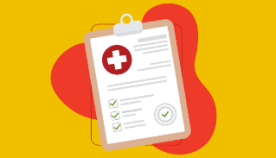AARP Hearing Center


There it goes again. Most of us, at one time or another, have experienced eyelid twitches (also known as myokymia): mild, involuntary contractions of the orbicularis oculi muscle, located under the skin around the eyelid. Usually occurring on one side and in the lower lid, twitching tends to be short-lived, lasting a few seconds or minutes, but can recur over a few hours, days or longer.
Though these twitches can be annoying, for sure, they are usually nothing to worry about, says Eleanore T. Kim, M.D., a New York City-based ophthalmologist affiliated with NYU Langone Health: “Eyelid twitching is quite common, usually harmless, and usually goes away on its own.”
Common triggers
Stress, fatigue, caffeine and alcohol. “One thing I ask patients who complain of twitching is, ‘How much caffeine do you drink a day?’” Kim says. Indeed, downing a lot of caffeinated beverages (such as coffee, tea, soft drinks and energy drinks) can cause quivering. She notes that caffeine increases sympathetic nerve activity, which may lead to more stimulation of the eye muscle.
A few small lifestyle tweaks may prevent bothersome twitches — for example, getting enough shut-eye (aim for seven to eight hours a night), carving out some time to de-stress during the day (say, 10 minutes of deep breathing or a walk around the neighborhood), and cutting back on the amount of soft drinks, java or vino you consume.

































































More on health
Eye Center
Expert information on vision health including cataracts, glaucoma and moreWhat to Know About Eyelid Surgery
Some people turn to blepharoplasty when their lids lose their lift9 Reasons You Should Visit an Eye Doctor
Be sure to schedule routine exams to maintain healthy vision